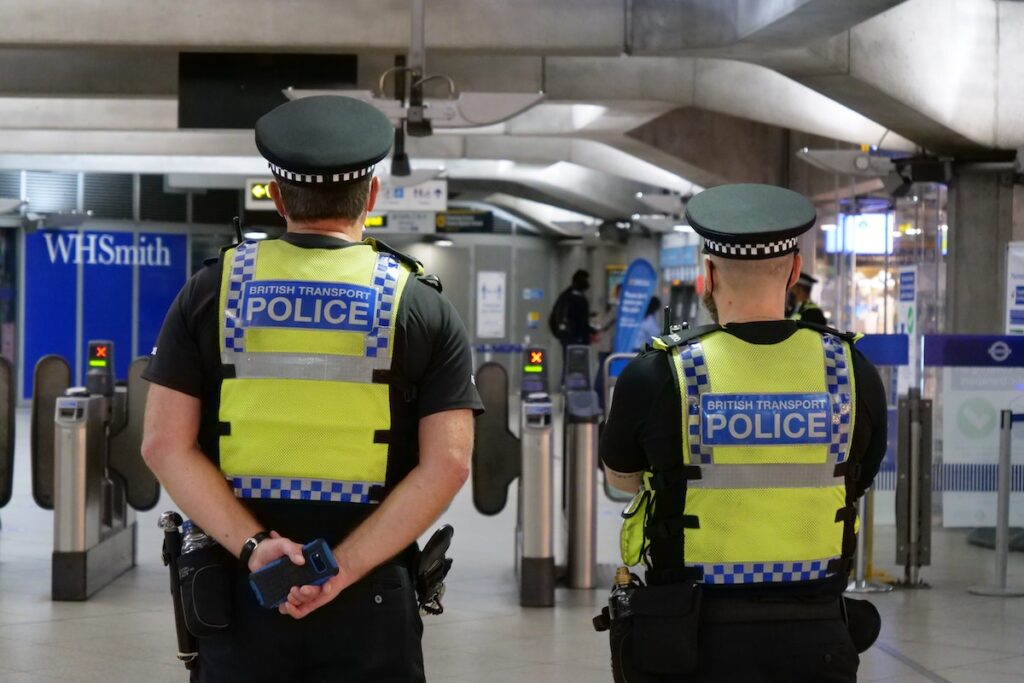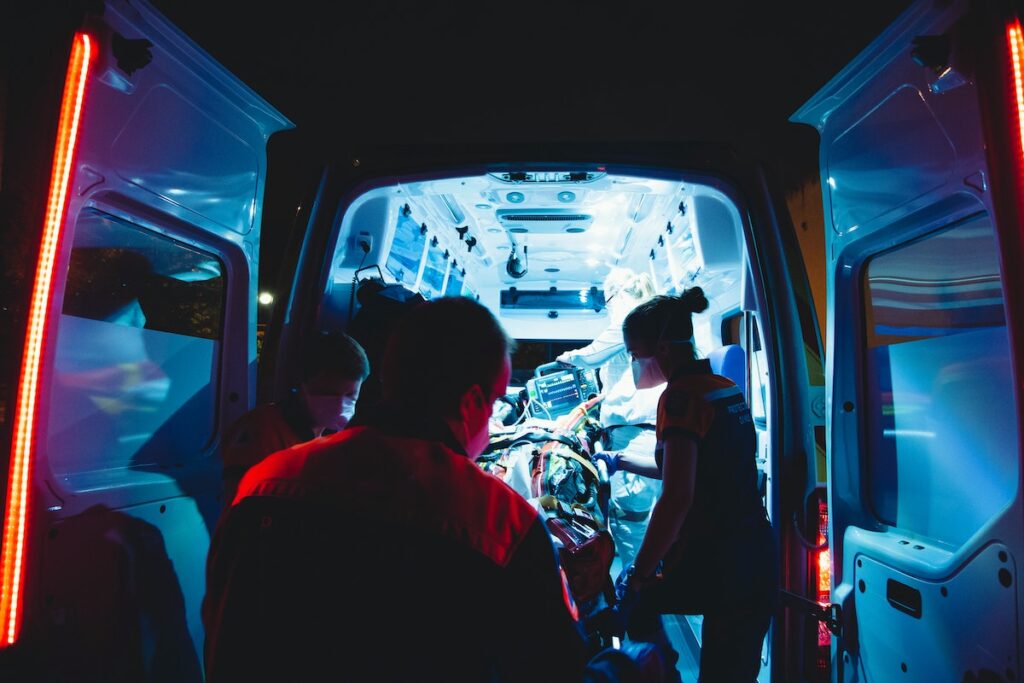
Section 136 of the Mental Health Act (MHA) (1983) enables police to detain an individual experiencing a mental health crisis in any public place, such as on the streets or in a shopping centre. This is implemented when the individual is a risk to themselves or others, and is in need of immediate mental health care. Police and ambulance workers will transport detainees to a place of safety for an assessment, which could be a police station, hospital or the person’s own home.
Despite recent efforts, the number of people being detained under the MHA continues to increase (NHS Digital, 2020). Read Kevin Stone and Vishal Bhavsar’s previous blogs for more information.
Research has identified concerns from police officers about accessing inpatient care for individuals detained. However, there has been limited investigation into the experiences of emergency workers implementing section 136. Genziani and colleagues (2020) set out to address this gap with this study.

Genziani and colleagues (2020) provide a novel insight into the experiences of ambulance workers and paramedics implementing the Mental Health Act section 136, aiming to bridge the gap in research.
Methods
This study used Interpretative Phenomenological Analysis (IPA) for an in-depth qualitative exploration of emergency workers’ experiences of implementing section 136.
A small number of emergency workers were purposely sampled. This included three police officers, one police mental health liaison officer, two ambulance workers, and one paramedic. Participants did not know one another.
Interviews (~50 minutes long) were conducted at participants’ workplaces between 2012 and 2014, audio-recorded and transcribed. The interviews used open-ended questions and prompts to invite participants to tell their stories. For example, police officers were prompted to think about their decision-making process.
The analysis was guided by two specific questions:
- What experiences are being shared and how are respondents making these meaningful to one another?
- What are the consensus, conflicts/contradictions and how are these being managed?
A theme identified in a third to half of the interviews was considered a ‘prominent theme’. Themes were randomly quality checked against the participant’s quotes after analysis.
Results
Three prominent themes were identified:
1. Making yourself human as first responders
It takes a good few hours to build rapport with her, which can be difficult if someone is going through an episode. You don’t want them to feel humiliated or mocked. Because you want them to know you are there to help – PO1
Participants wanted to make it clear that they are not just enforcing the law, but are there to support the individual being detained. The participants recognised the conflict between building trust and detaining someone, and the feelings of betrayal this may invoke. How the participants approached and communicated with individuals was discussed to be important in building a rapport, for example taking off their hat and turning down their radio in an effort to ‘make themselves human’.
2. The 136 suite
I find once you get to [hospital X], I’ve waited 2 hours before to get into the 136 suite and that can cause issues with the patient – AMB2
This is a designated place of safety and transition point into inpatient mental health care. Participants spoke less favourably of their experiences with the suite, with only one participant expressing a positive experience. Ambulance workers were concerned with the welfare of detainees when held for long periods in emergency vehicles when there are delays accessing the suite, and wondered what actually happened to individuals once inside. Police are able to liaise with staff inside the suite, and spoke about blurred boundaries around responsibility and feeling overwhelmed with a lack of clear answers regarding care decisions.
3. Training and quest for collaboration
There is no training on what you might want to look for, how it might present itself and different types of mental health, erm, issues. I don’t think there were any role-plays or anything like that, which I think could possibly be helpful – PO3
Participants held the unanimous view that training was limited. In particular, participants wanted a better understanding of mental illness and substance misuse. Practical suggestions were made to develop a more collaborative approach and minimise waiting times for detainees, such as a bed management system. Some participants demonstrated a commitment and willingness to go beyond the remit of their roles for the individuals detained.

Police officers, paramedics, and ambulance workers seek more mental health training and systemic changes to protect the well-being of individuals detained under section 136 of the Mental Health Act.
Conclusions
Ambulance workers, paramedics, and police officers are often the first to respond to mental health crises in the community. However, this research has highlighted the difficulties and barriers that emergency workers face when implementing section 136 of the MHA.
Building trust is a crucial first step to engage an individual to access mental health care. Emergency workers express the challenge of achieving this trust with someone when they are there to detain them, possibly against their will.
Frequent delays gaining access to the place of safety, the 136 suite, means that emergency workers are forced to hold detainees in emergency vehicles for a long period of time. Not only do emergency workers feel unprepared to deal with mental health crises, but also express significant concern for the welfare of detainees in this situation.
It is clear from this research that possible systemic changes could be made to improve the quality of the experience for both individuals being detained under section 136 and the emergency workers involved.

There are a number of difficulties and barriers that emergency workers face when implementing section 136 of the Mental Health Act.
Strengths and limitations
Strengths
- This study gives valuable and novel insight into the experiences of implementing section 136 from the perspective of ambulance and paramedic workers, as well as police officers. The findings have highlighted the factors hindering this process, providing useful directions for future research and service development.
- Interpretative Phenomenological Analysis (IPA) is a well-validated qualitative technique for in-depth exploration of lived experiences, and so highly suited for the aims of this research.
- The interview approach was clearly explained, and the use of open questions with prompts would have produced rich data.
Limitations
- An emergency workers’ experience of section 136 is likely to be highly influenced by the systemic resources and pressures in that particular area. Participants were all from a single region in London, where there is high pressure on statutory services including NHS and the police. This context is important when interpreting the findings, and limits the generalisability to emergency workers’ experiences of section 136 across the UK.
- Some interview questions appear slightly leading, for example: “Did you feel your action(s) were justified?” and “Have your encounters with individuals in these kinds of situations affected, if at all, the way you view people with mental illness?” Arguably these are influenced by the interviewers’ expectations and assumptions, rather than led by the participants’ experiences.
- Some important aspects of the method are not specified. Participants were purposely sampled, but the paper does not specify recruitment criteria or whether participants were invited or volunteer to interview. There is very limited demographic information for participants. The procedure and researchers involved in conducting and analysing the interviews are also not described. Inconsistencies here could impact the validity and reliability of the findings.

This study provided a valuable insight into the experiences of emergency workers implementing section 136, but there are some methodological limitations that future research can resolve.
Implications for practice
This study highlights the challenges to emergency workers associated with implementing section 136 of the MHA. Sufficient mental health training for emergency workers involved at each stage of this process is imperative, and warrants review. This is essential to protect the wellbeing of both detainees and emergency workers.
One of the more prominent concerns discussed was holding detainees in emergency vehicles for extended periods of time. Improvements in the procedures and transition into mental health care are necessary. However, in a society where resources are extremely stretched these situations may not always be avoidable. Realistic consideration of this study emphasises the need to assess the training and support of all emergency services staff involved in this process, including ambulance staff and paramedics.
Further research is necessary, particularly in light of the limitations of this study. It would be valuable to explore emergency workers’ experiences of section 136 in different regions. In doing so, the extent to which resourcing constraints impact challenges and distress for emergency workers, as well as the individuals being detained, can be explored.

Emergency workers implementing the Mental Health Act call for more mental health training and a more collaborative approach among mental health professionals and emergency workers.
Statement of interests
None to declare.
Links
Primary paper
Genziani, M., Gillard, S., Samuels, L., & Chambers, M. (2020). Emergency workers’ experiences of the use of section 136 of the Mental Health Act 1983: interpretative phenomenological investigation. BJPsych Bulletin, 44(6), 250–254. https://doi.org/10.1192/bjb.2020.21
Other references
NHS Digital. (2020). Mental Health Act Statistics, Annual Figures: England, 2019-2020.
Kevin Stone (2020): What can be done during the MHA Assessment process to reduce compulsory psychiatric admissions? The Mental Elf (National Elf Service)
Vishal Bhavsar (2017): Street triage: all it’s cooked up to be? The Mental Elf (National Elf Service)
Photo credits
- Photo by Ethan Wilkinson on Unsplash
- Photo by Jo Szczepanska on Unsplash
- Photo by Mat Napo on Unsplash
